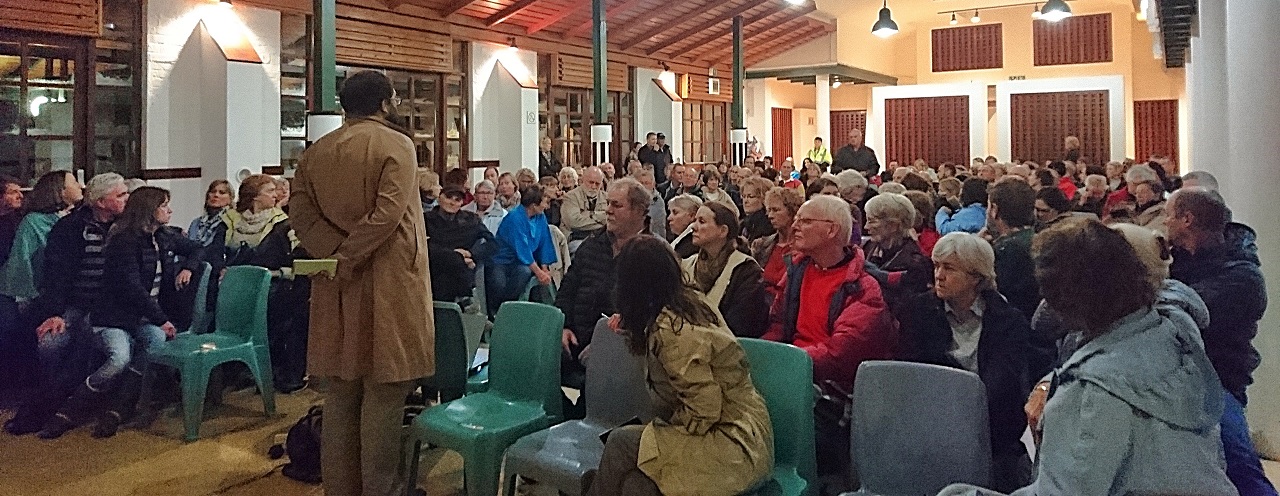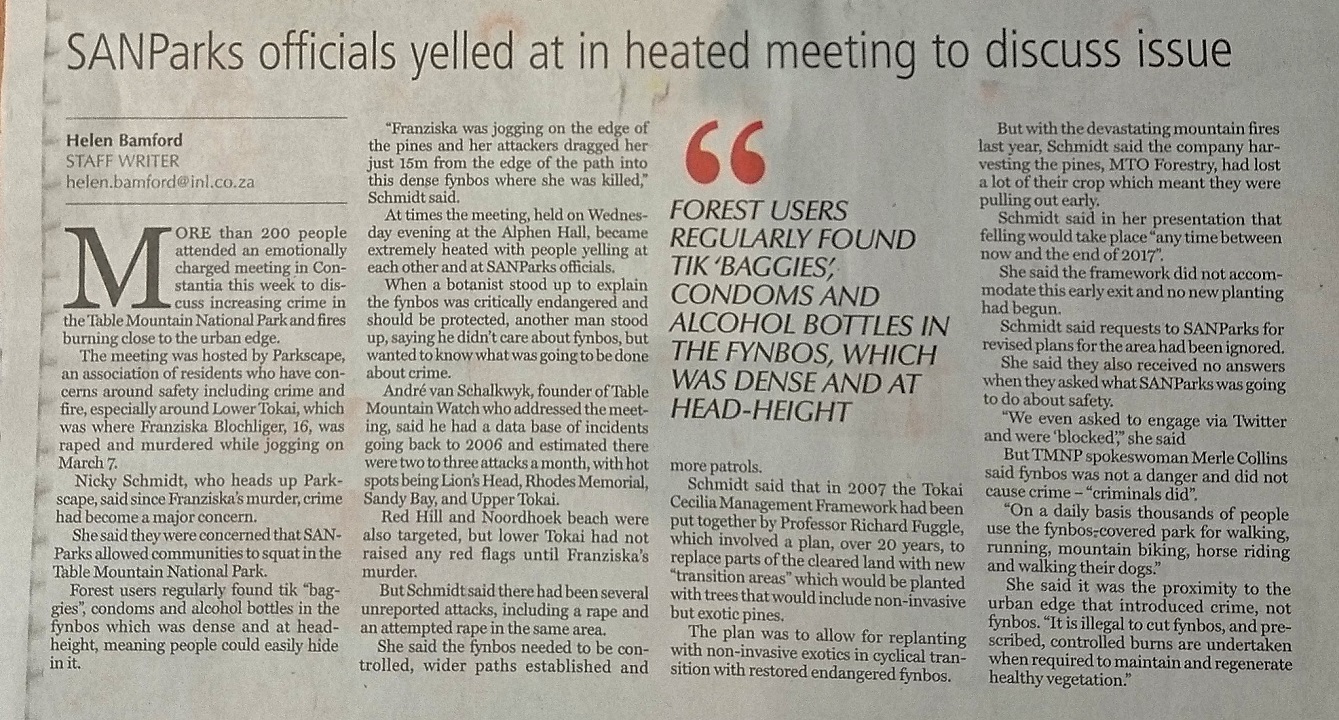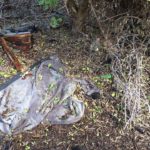I’m sure many of the 200 people who left their cosy homes on the evening of July 20th in the bucketing rain to fill the Alphen Community Hall expected the meeting to be about saving the trees in the Lower Tokai Park. Instead it was about saving lives.
Nicky Schmidt, the driving force behind the event and chairperson of a group called Parkscape, is determined that 16-year old Franziska Blöchliger will not have died in vain. In early March, as we all painfully remember, Franziska was running on the sand track adjacent to the pines and parallel to Orpen Road when her assailants grabbed and dragged her into the too-tall fynbos where she was brutally raped and murdered.
“We know there are people living in the fynbos. We’ve found the signs. Some may be harmless but because muggers know it’s possible to hide without detection, they are drawn to these secret places. Accidents are just waiting to happen…..”
According to the opening speaker Andre van Schalkwyk, who runs Table Mountain Watch, which works hard to restore visitor confidence and improve safety in Table Mountain National Park – including in Lower Tokai – people must take responsibility for their own safety.
“Even in those situations where you cannot use your cellphone, pre-primed with emergency numbers, you still have three tools. Your eyes to be aware of our surroundings and who is in the vicinity. Your ears to listen for movement and your voice – a very powerful tool – to shout at the threatening person and to scream your loudest for help.”
According to Nicky, who gave an excellent power point presentation on the background to the somewhat fractious relationship between SANParks and the public, the tragedy of Franziska Blöchliger, along with other stabbings, rapes and muggings in the Table Mountain National Park, has brought about the need to create safe urban parks for all in the buffer zones of TMNP, starting with Lower Tokai.
The pines could be cut by MTO Forestry “any time between now and next year”, she said. Turning the land over to fynbos was to risk bringing fire and crime to the edge of urban life. Additionally, it could mean that the Tokai Cecilia Management Framework (which allows for shaded recreation in Tokai) that was toughly negotiated by Nicky and her previous team in 2006/7, and which was committed to by SANParks, could run aground with new environmental legislation and MTO’s early departure.
For anyone wondering who the people behind Parkscape are – well, they’re neither a bunch of activists nor a group of nutters who would tie themselves to the pine trees on the day the chainsaw teams moved in. Nicky from Stonehurst, who ran the original Parkscape in 2006 – 2008, describes the group “as eight concerned residents worried about safety in Lower Tokai, and that the recreational opportunities currently provided in the Tokai Cecilia Management Plan will be lost.”
Others in the team are Prof Eugene Moll (Kirstenhof), Chris Whyte (Tokai), Glenda Phillips (Silvertree), Ann Hutchings (Tokai), Sandra Kruger (Tokai), Renee Baard (Bergvliet) and Duncan Greaves (Stonehurst).
The second incarnation of Parkscape only came together in May and was constituted as an association a month ago. But it is fast increasing its popularity and has close on 1800 members on its database, with some as far afield as Stellenbosch and Brackenfell, along with residents from Sea Point, Newlands, Hout Bay, Noordhoek and the greater Constantia Valley.
Other groups in the area have also shown their support – such as the Tokai Residents’ Association and Neighbourhood Crime Watch, Women of Westlake, Zwaanswyk Resident’s Association and various cycling, riding, pony and dog-walking people.
So what’s to be done about Lower Tokai?
It was the late arrival of Alderman Felicity Purchase who brought the weight of the Cape Town City Council with her, that hopefully will ensure that from now on SANParks will respond to public concerns over safety and nothing will be done without public participation to adhere to the original Management Framework for a people-friendly park with shaded recreation area, pockets of fynbos and stands of non-invasive pines which will be cut and re planted.














